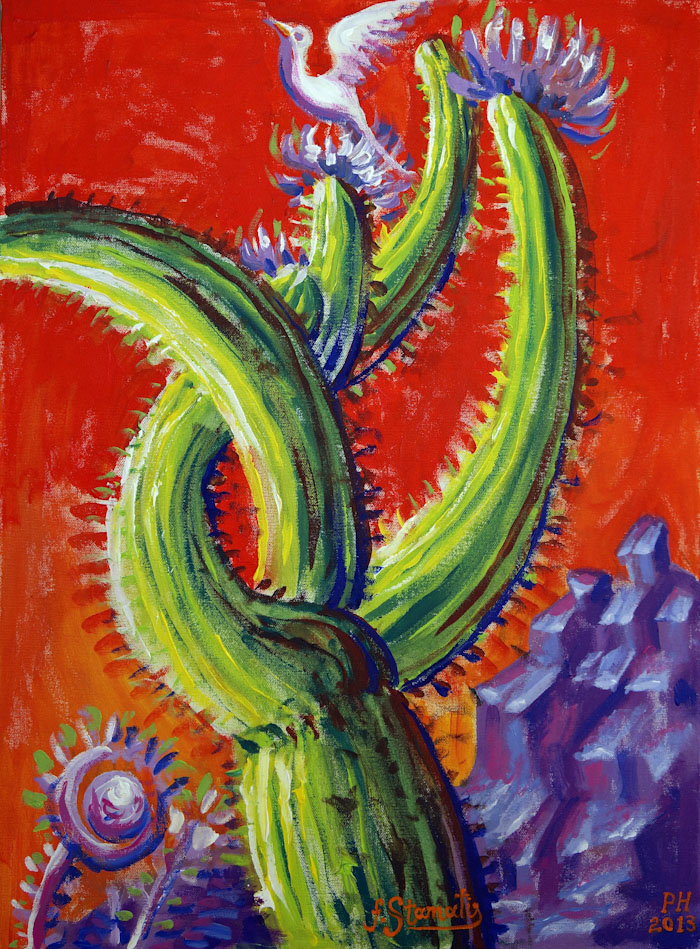
- Details
- Category: Byzantine Art & Postmodern Times
- Hits: 2426

"Arizona Cactus", Acrylic on canvas, June 2013
The inspiration for this painting came when I visited St. Anthony’s Monastery in Arizona, where I had the opportunity to see many cacti. The painting, however, is done in a completely impressionistic style, with a great deal of movement in the painting. The result is that the branches of the cactus have a good deal of movement, which expresses the possibility of nature to take on a personality of its own.
This bestowal of personhood to nature, which is usually nondescript, is a characteristic that we encounter in many great works. In particular, whatever Van Gogh painted that was not human, he would give traits of human personality. So here, in place of branches, the cactus has hands. And the hands suggest that it is dancing or making some other human movement, such that it’s able to capture a small white bird. The bird is portrayed with its wings open, trying to free itself from the fatal embrace of the cactus. So there are two elements to the cactus: the cactus is open to us, encouraging us to come close, while at the same time it has these needles and arms that capture whatever comes near, or whatever is blown toward it by the wind, and it’s dangerous. From the perspective of painting, it’s interesting that the background is red. Here, I should note that the heat of the landscape causes the painter to feels that in order to express it properly, he must use red, rather than blue, which is the common way to portray the sky. This is the superficial explanation, however. There’s also the sense in which the instinct of the painter is to place it next to an object whose color complements it. In this case, a very green cactus. There is also the symbolic dimension of the painting: that such a strong red color is able to properly portray the habitat of such a dynamic cactus. From the perspective of technique, it’s interesting to note that the red brushstrokes that approach the cactus provide the impression of many needles, without the painter having to have painted every last needle individually. It’s a technique that comes out of the tradition of Impressionism – the painter tries to create an impression of movement, needles, and aggressiveness, rather than present an optical phenomenon in a literal fashion.
